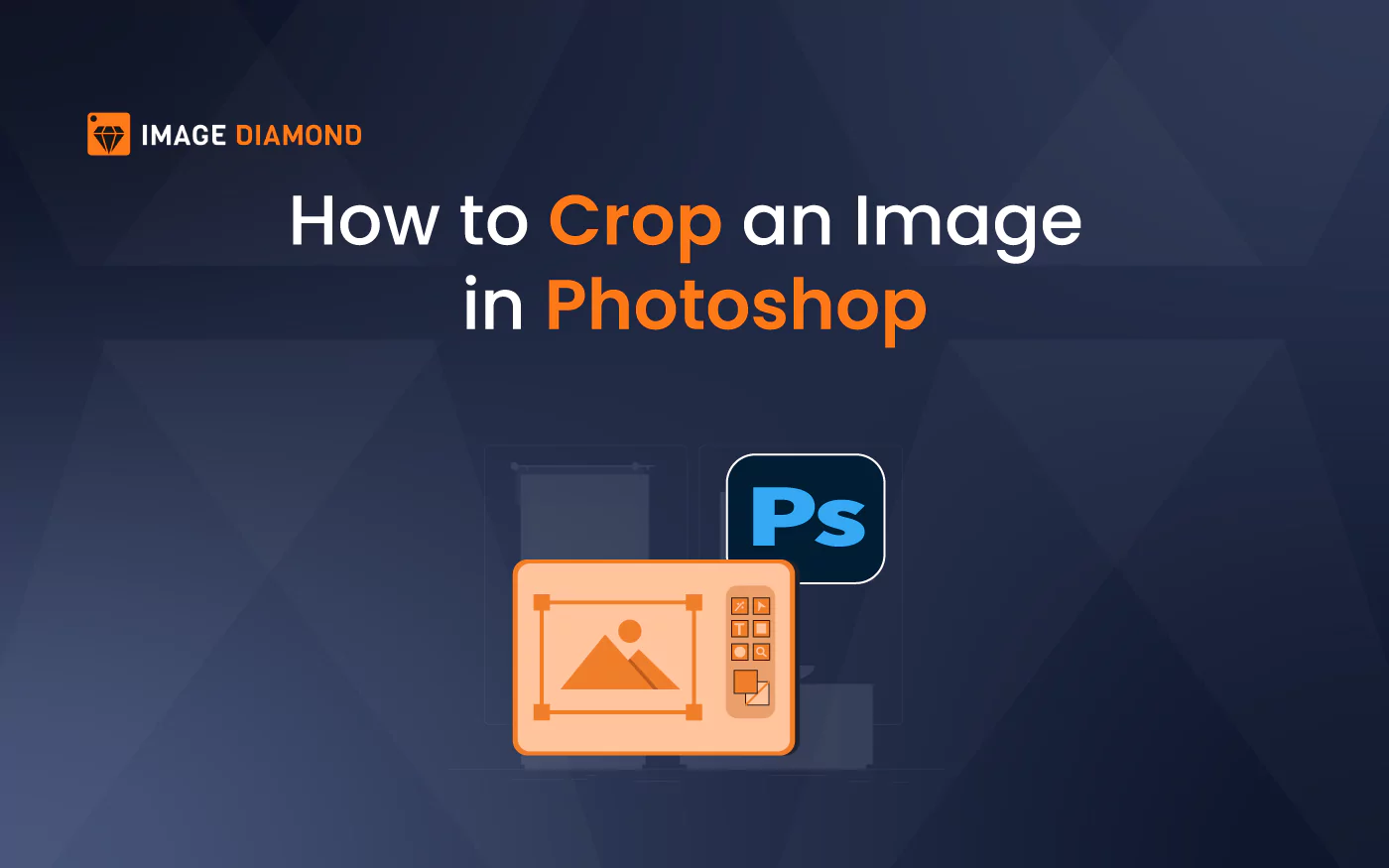
How to Crop an Image in Photoshop
Cropping is one of the
fundamental skills every Photoshop user should master. Whether you're preparing
images for social media, creating graphics for a website, or simply enhancing
your personal photographs, knowing how to crop effectively can significantly
improve your visual content. This article will guide you through the cropping
process in Adobe Photoshop, covering everything from basic techniques to
advanced tips.
Table of Contents
Understanding the Importance of Cropping
Before diving into the
technical aspects of cropping, it’s essential to understand why
cropping is important. Cropping is not merely a functional task; it plays a
crucial role in enhancing the overall quality and impact of your images. Here
are some key reasons why effective cropping is vital:
- Focus:
Cropping helps direct the viewer's attention to the main subject of the
image. By removing unnecessary elements, you can create a more compelling
focal point that draws the eye and enhances storytelling.
- Composition: It allows for better composition by removing distracting
elements from the frame. A well-composed image can evoke emotions and
convey messages more effectively, making it essential for photographers
and designers alike.
- Aspect Ratio: Adjusting the aspect ratio is crucial for different platforms
(e.g., Instagram, Facebook). Each platform has its own preferred
dimensions, and cropping helps ensure that your images fit perfectly
within these constraints without losing important content.
- Enhancing Details: Cropping can help highlight details that
might be overlooked in a wider shot. By zooming in on specific features or
textures, you can create a more intimate connection with your audience.
- Creating Visual Balance: Effective cropping can help achieve visual
balance in an image. By considering elements like symmetry and negative
space, you can create compositions that feel harmonious and pleasing to
the eye.
Getting Started with Cropping in Photoshop
Step 1: Open Your Image
The first step in any
editing process is to open your image in Photoshop. This is straightforward but
crucial for setting up your workspace effectively.
- Launch Adobe Photoshop on your computer.
- Click on File > Open and
navigate to the folder containing the image you want to crop. Select it
and click Open.
- Once your image is loaded, take a moment to
assess its composition and identify areas that may benefit from cropping.
Step 2: Select the Crop Tool
Selecting the right tool
is essential for efficient editing. The Crop Tool is specifically designed for
this purpose.
- In the Toolbar, locate and select
the Crop Tool (shortcut key: C).
- You will see a cropping border appear around
your image, indicating that you are now in crop mode.
- The Options Bar at the top provides additional
settings that allow you to customize your cropping experience further.
Step 3: Adjust the Crop Area
Manual Adjustment
Once you have selected the
Crop Tool, it’s time to define the area you want to keep:
- Drag the corner handles of the cropping border
to adjust its size and shape according to your preference.
- You can also drag the edges to make fine
adjustments. If you want to reposition the crop area itself, click inside
the border and drag it around until you're satisfied with its placement.
Using Aspect Ratios
If you want to maintain a
specific aspect ratio for your cropped image:
- In the Options Bar at the top, select a preset
aspect ratio from the dropdown menu (e.g., 1:1 for square images).
- Alternatively, enter custom dimensions in the
width and height fields if you have specific requirements (like 1920x1080
for HD videos).
- This feature is particularly useful when
preparing images for various platforms where specific dimensions are
required.
Step 4: Committing to Your Crop
Once satisfied with your
selection:
- Press Enter (Windows)
or Return (Mac) to apply the crop.
- You can also click on the checkmark icon in
the Options Bar to finalize your changes.
This action will remove
any areas outside of your selected crop region and adjust your canvas
accordingly.
Step 5: Non-Destructive Cropping (Optional)
To maintain flexibility in
your editing process:
- In the Options Bar, uncheck Delete
Cropped Pixels before committing to your crop.
- This allows you to retain all original pixels
so that if you decide later on that you'd like to revert back or adjust
your crop further, you can do so without losing any data.
By using non-destructive
cropping techniques, you ensure that your creative process remains flexible and
adaptable.
Advanced Cropping Techniques
Straightening Images
Sometimes images may not
be perfectly aligned, which can detract from their overall quality. Here’s how
to straighten them while cropping:
- With the Crop Tool selected, look for
the Straighten Tool in the Options Bar.
- Draw a line along an edge that should be
straight (like a horizon or building edge).
- Photoshop will automatically rotate and
straighten your image based on this line, ensuring that it appears more
polished and professional.
Straightening images not
only improves their aesthetic appeal but also enhances their
credibility—especially important in professional contexts like product
photography or editorial work.
Using Content-Aware
Fill
When expanding your canvas
beyond its original size during cropping:
- Enable Content-Aware Fill in
the Options Bar.
- This feature intelligently fills in gaps with
similar pixels from your image, creating a seamless look without
noticeable artifacts or empty spaces.
Content-Aware Fill is
particularly useful when you're trying to maintain continuity in backgrounds or
when working with complex textures where simply filling with a solid color
would look unnatural.
Tips for Effective Cropping
Here are some practical
tips to enhance your cropping skills:
- Rule of Thirds: Use grid overlays by enabling them in View
> Show > Grid. Position key elements along grid lines or
intersections for balanced composition. This technique helps create
dynamic images that are visually engaging.
- Experiment with Different Ratios: Try various aspect ratios to see what works
best for your image. For instance:
|
Aspect Ratio |
Use Case |
|
1:1 |
Instagram posts |
|
16:9 |
YouTube thumbnails |
|
4:5 |
Portraits |
Experimenting with
different ratios allows you to tailor images specifically for their intended
use while enhancing their overall impact.
- Zoom In for Detail: Zoom into your image while cropping to
ensure you're focusing on important details without distractions. This
technique helps refine your selection process by allowing you to see finer
elements that may require attention.
- Consider Negative Space: Sometimes less is more; leaving negative
space around subjects can enhance their importance within an image while
providing breathing room visually.
Common Mistakes to Avoid
Even experienced users can
make mistakes when cropping images. Here are some common pitfalls to avoid:
- Over-Cropping: Be careful not to crop too much; it may
eliminate essential parts of your image that contribute meaningfully to
its context or story.
- Ignoring Composition Rules: Always consider composition rules like
balance and symmetry when cropping; neglecting these principles can lead
to awkward or unappealing results.
- Not Saving a Copy: Always work on a duplicate layer or save a
copy of your original file before making significant edits; this practice
ensures that you have access to unaltered versions if needed later on.
- Neglecting Resolution Considerations: When cropping an image significantly, be
mindful of how this affects resolution—especially if you're planning on
printing or displaying images at large sizes.
By avoiding these common
mistakes, you'll be better equipped to produce high-quality cropped images that
meet professional standards.
Practical Applications of Cropping
Social Media Graphics
When creating graphics for
social media platforms, cropping plays a vital role in ensuring that images fit
perfectly within designated spaces without losing important content.
Example Dimensions for
Popular Platforms:
|
Platform |
Recommended Size |
|
Instagram |
1080 x 1080 px (Square) |
|
Facebook |
1200 x 630 px |
|
Twitter |
1200 x 675 px |
Understanding these
dimensions allows you to tailor each image specifically for its platform while
maximizing engagement through optimal presentation.
Product Photography
For e-commerce sites,
high-quality product images are essential as they directly influence purchasing
decisions. Cropping helps eliminate distractions and focuses on product
details:
- Use consistent aspect ratios across product
images for uniformity; this creates a cohesive look across listings which
builds trust with customers.
- Ensure that products are centered and fill
most of the frame; this draws attention directly where it's needed most—on
what you're selling!
Portrait Photography
In portrait photography,
cropping can enhance facial features and expressions:
- Crop tightly around faces while maintaining
some background context; this approach helps convey emotion while still
providing enough information about surroundings.
- Experiment with different crops (headshot vs
full body) based on usage needs; knowing when each type works best will
elevate both personal portfolios as well as professional presentations.
Conclusion
Cropping is an essential
skill that can dramatically improve your images and overall design quality in
Photoshop. By mastering both basic and advanced techniques, you can create
visually appealing compositions that effectively communicate your message.
Remember these key points
as you practice:
- Always focus on enhancing composition and
directing attention through thoughtful selections.
- Utilize tools like straightening and
content-aware fill for professional results; these features save time
while improving quality dramatically.
- Experiment with different aspect ratios based
on specific needs; flexibility leads creativity!
With practice and creativity, you'll find that cropping is not just about cutting away; it's about refining and enhancing your visual storytelling capabilities! Happy editing!


.png)




